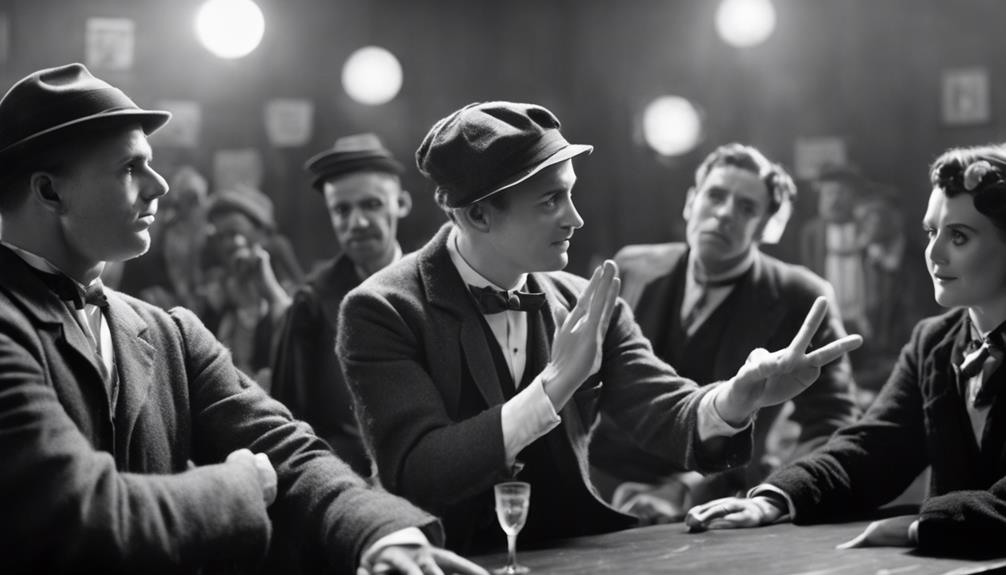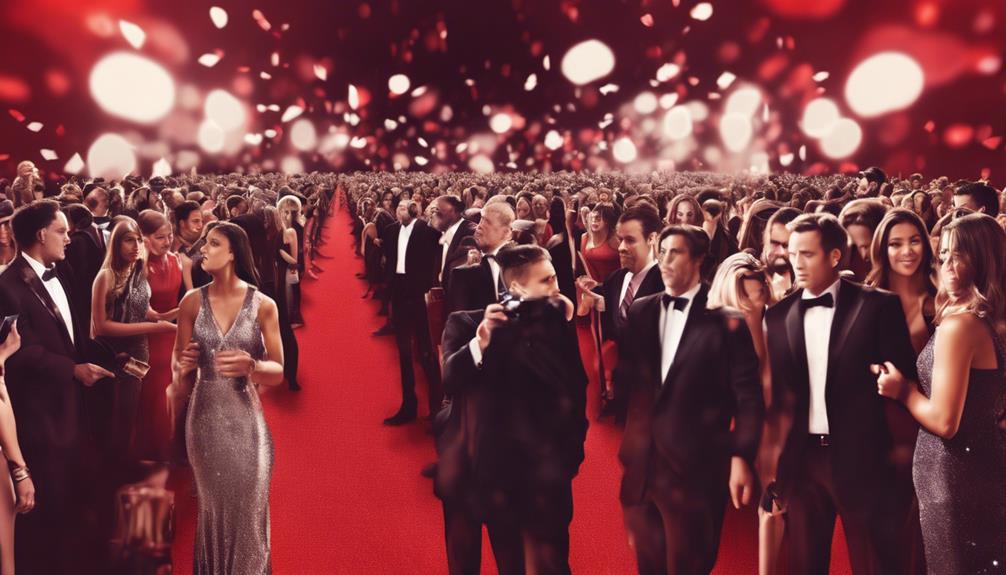Deaf actors transformed early Hollywood with groundbreaking innovations. Their work not only increased accessibility in silent films but also championed inclusivity and representation in the industry. By pioneering closed captioning and experimenting with acting styles that bridged language barriers, these actors revolutionized the film landscape. Despite facing challenges like foul language hindering understanding and technical limitations, they persevered, pushing for equal opportunities and progress in the industry. Their commitment to creativity and inclusivity laid the foundation for a more diverse Hollywood. Their journey showcases a rich history of innovation and perseverance in the quest for deaf representation.
Key Takeaways
- Deaf actors enhanced silent film accessibility.
- Emerson Romero pioneered closed captioning.
- Diverse acting styles reinforced inclusivity.
- Innovative methods transcended language barriers.
- Revolutionized Hollywood for deaf talent representation.
Deaf Actors' Impact on Silent Films
Deaf actors profoundly influenced the accessibility and artistic landscape of silent films through their innovative contributions and unique performances. One notable pioneer, Emerson Romero, not only pioneered closed captioning but also enhanced accessibility in silent films. His mesmerizing portrayal of Charlie Chaplin captivated audiences and advocated for inclusivity in the film industry. Romero's impact was history-making, as he increased accessibility for deaf audiences and inspired both deaf actors and advocates.
Clear inter-titles in silent films bridged the communication gap, allowing deaf viewers to follow the narrative visually. The diverse range of acting styles in silent films enabled interpretation and appreciation of various techniques, reinforcing the accessibility of silent films for all audiences.
Challenges in Early Deaf Filmmaking
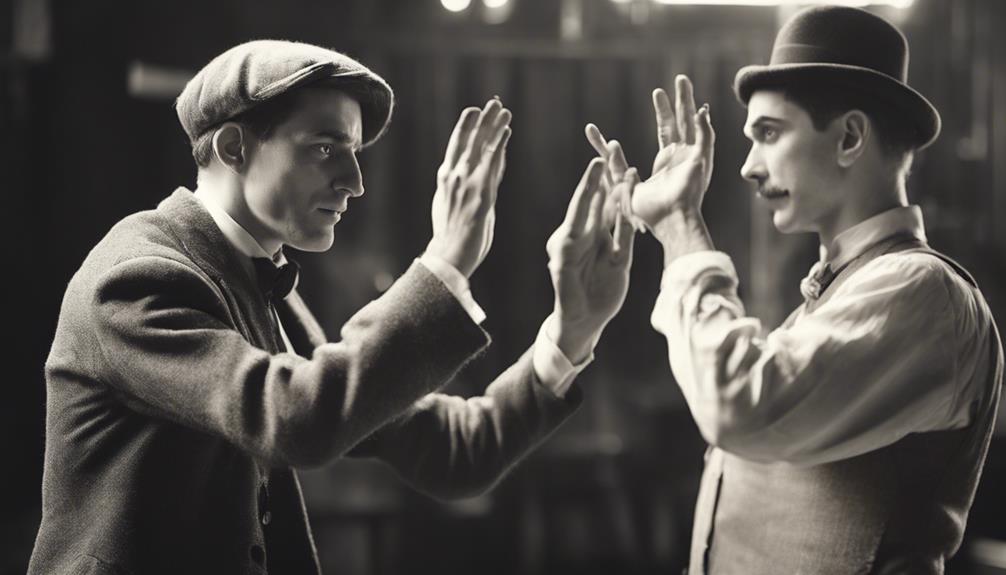
Exploring the early terrain of filmmaking presented a myriad of challenges for actors with hearing impairments. Foul language in silent films posed a significant obstacle, as inter-titles often failed to capture explicit language nuances, hindering understanding for both deaf and hearing audiences.
Additionally, limitations in lip-reading on screen made it difficult to grasp the subtleties of spoken language, further complicating communication for deaf individuals. The lack of support for accessibility efforts and technical limitations also impeded progress in early deaf filmmaking.
These challenges not only hindered opportunities for deaf actors but also limited their representation in the film industry, leading to struggles for equal recognition and support, prompting a push for changes in Hollywood standards.
Transition to Sound Films
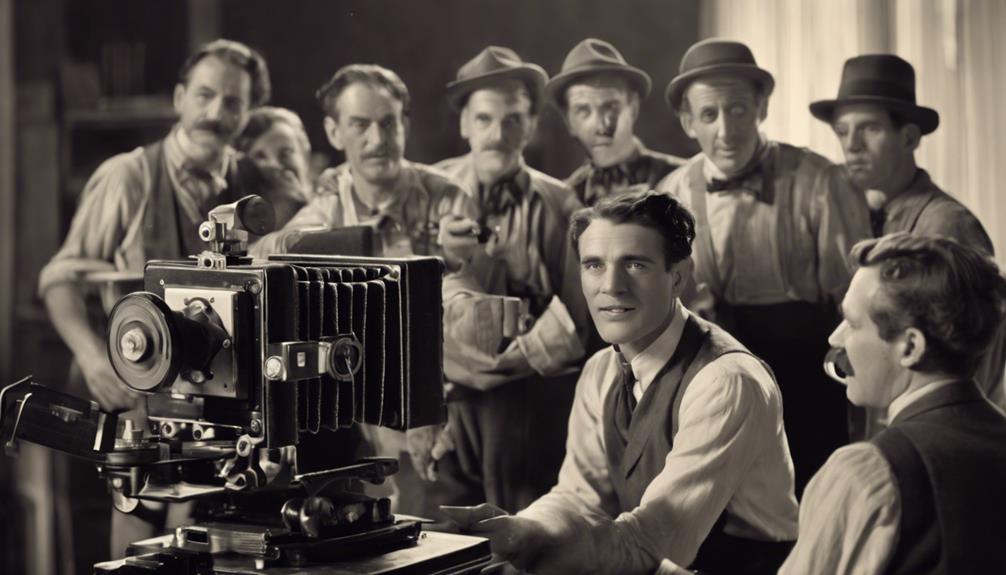
During the shift to sound films in early Hollywood, deaf actors and advocates faced new challenges and opportunities. The evolution brought about significant changes, posing hurdles for deaf audiences due to the reliance on spoken dialogue.
Deaf actors, who'd excelled in silent films, now had to adapt to the integration of sound. This transformation meant a potential loss of the visual storytelling elements that had made silent films accessible to deaf viewers. However, it also opened doors for advancements in closed captioning technology and increased representation of deaf talent in the industry.
Despite the challenges, this period marked a time of innovation and progress towards more inclusive filmmaking practices for deaf individuals.
Innovation in Deaf Representation
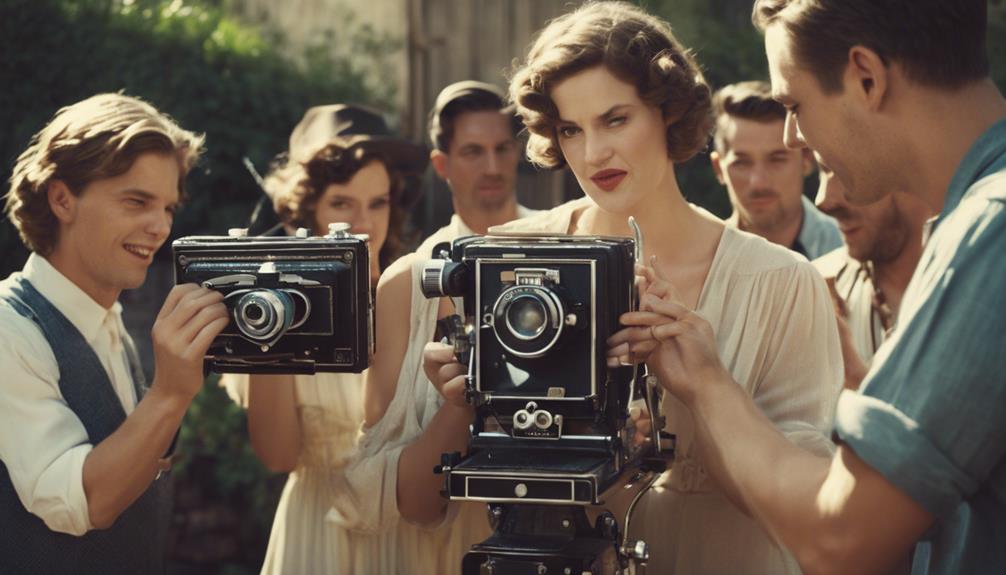
As Hollywood embraced the era of sound films, the landscape of deaf representation in the industry underwent a significant shift. Deaf actors and advocates began exploring innovative ways to enhance their visibility and accessibility on screen.
From pioneering closed captioning technologies to experimenting with new acting methods that transcended language barriers, deaf individuals played a pivotal role in revolutionizing early Hollywood. Their commitment to inclusivity and creativity paved the way for increased representation of deaf talent in the film industry.
Overcoming Technical Limitations
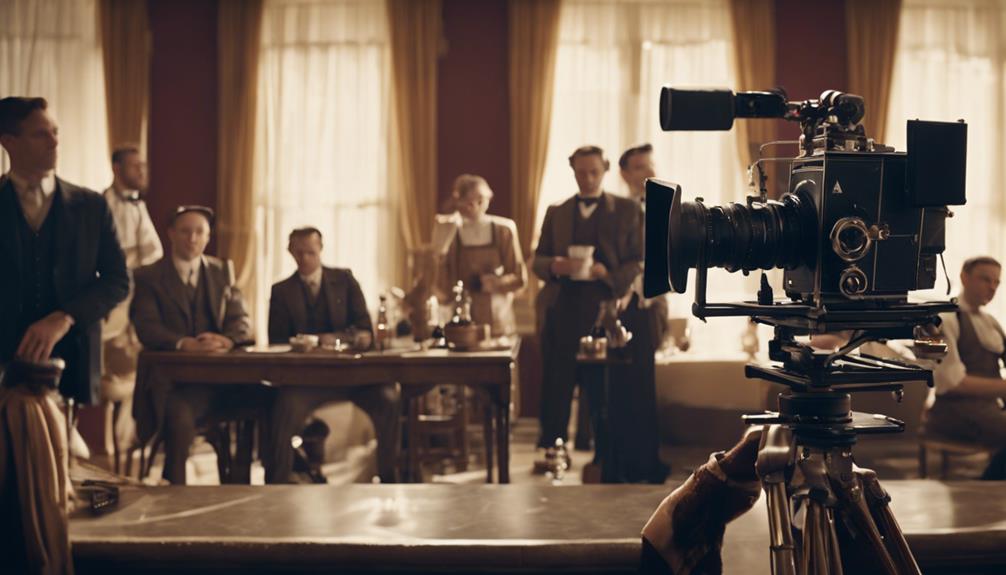
Deaf actors and advocates in early Hollywood persevered through technical limitations to advance accessibility in the film industry. Despite facing challenges like limited support for their efforts, they pushed forward to improve opportunities for deaf talent. One major obstacle they encountered was the lack of advanced technology to aid in accessibility. The table below illustrates some of the key technical limitations they had to overcome:
| Technical Limitations | Impact on Accessibility |
|---|---|
| Limited closed captioning tools | Hindered deaf audience comprehension |
| Lack of visual aids | Difficult for deaf viewers to follow storyline |
| Inadequate sound equipment | Hindered proper sound transmission |
| Scarce resources for accessibility projects | Slowed progress in advancing inclusivity |
| Absence of standardized accessibility guidelines | Challenged efforts to implement industry-wide changes |
Artistic Contributions of Deaf Actors
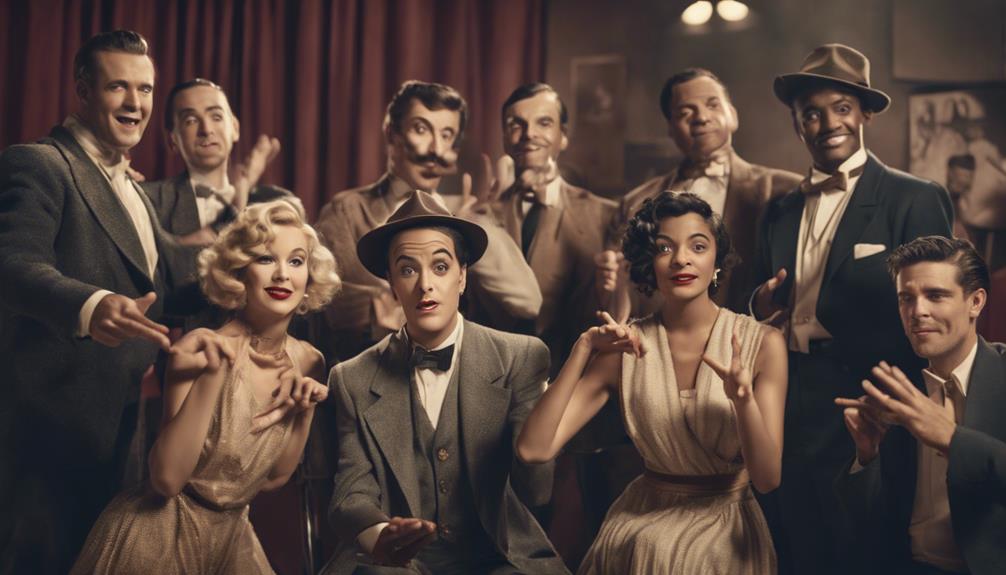
The artistic contributions of deaf actors in early Hollywood showcased immense creativity and talent, paving the way for greater representation and inclusivity in the film industry. Deaf actors like Emerson Romero not only pioneered closed captioning techniques but also enhanced accessibility in silent films through their mesmerizing portrayals and advocacy for inclusivity.
Their diverse range of acting styles allowed for unique interpretations and appreciation of various techniques, transcending language barriers and fostering a sense of belonging within the deaf community. By advocating for increased accessibility and breaking stereotypes, these actors inspired future generations of filmmakers and actors to push for changes in Hollywood standards, ensuring that all individuals, regardless of hearing abilities, have a voice in the industry.
Legacy of Deaf Silent Film Stars
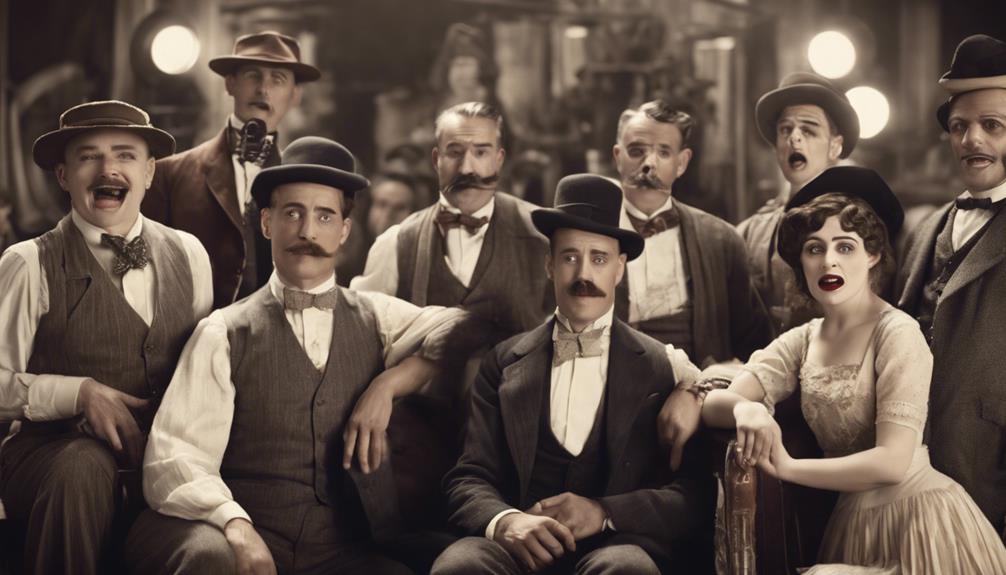
Emerson Romero and other pioneering deaf actors left behind a lasting legacy in the silent film era. Their contributions paved the way for increased accessibility and representation in early Hollywood. Despite the challenges they faced, these actors showcased remarkable talent and determination, leaving a profound impact on the film industry.
Granville Redmond, David Marvel, Eduardo Romero, and Albert Ballin were among those who made significant artistic contributions, even though many of their films have been lost over time. Their artistic mastery, captured in images that have survived, continues to inspire future generations of filmmakers.
Conclusion
To wrap up, the pioneering spirit and innovative contributions of deaf actors in early Hollywood were truly revolutionary, setting the stage for increased accessibility and inclusivity in the film industry.
Their perseverance in the face of challenges and dedication to their craft have left a lasting legacy that continues to inspire and shape the future of filmmaking.
Their impact, like a thunderous roar echoing through time, will forever be felt in the hearts and minds of audiences worldwide.

